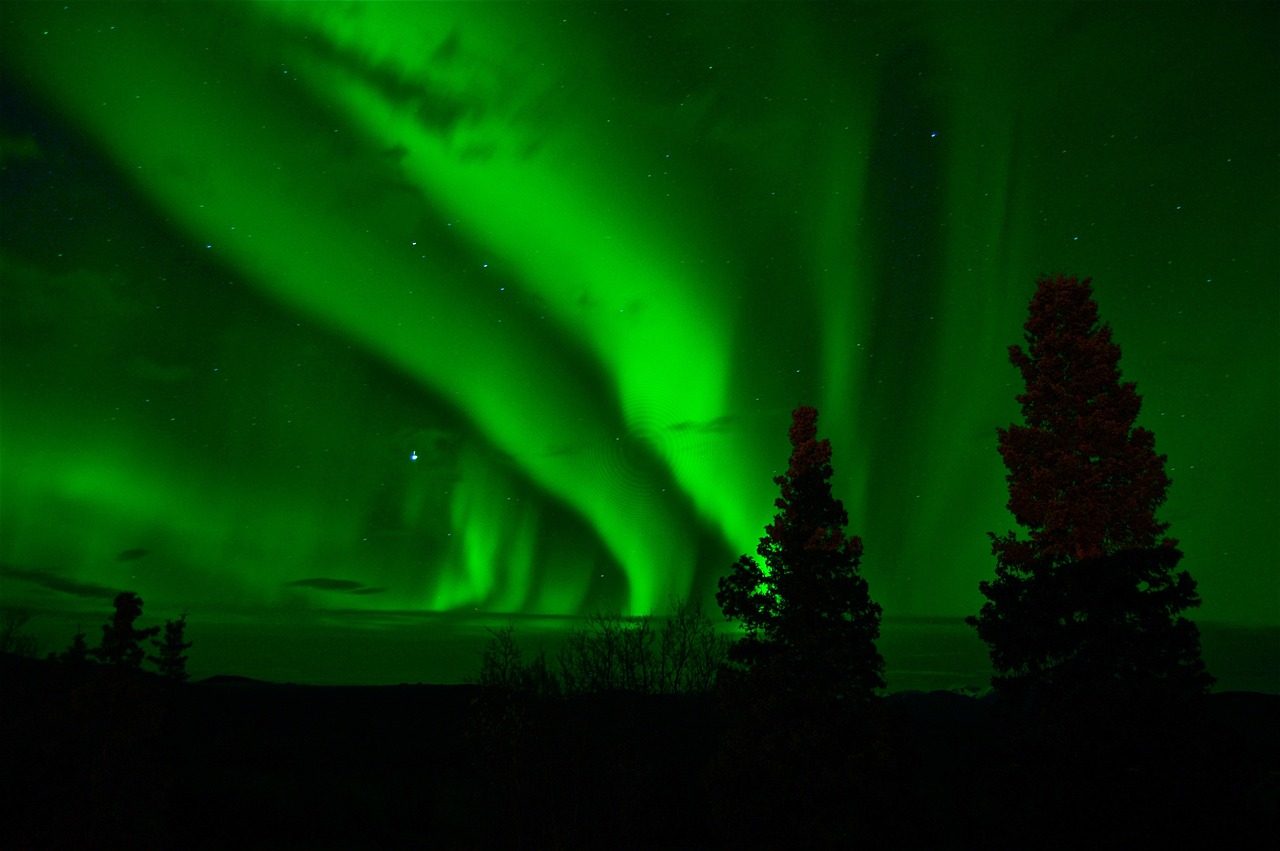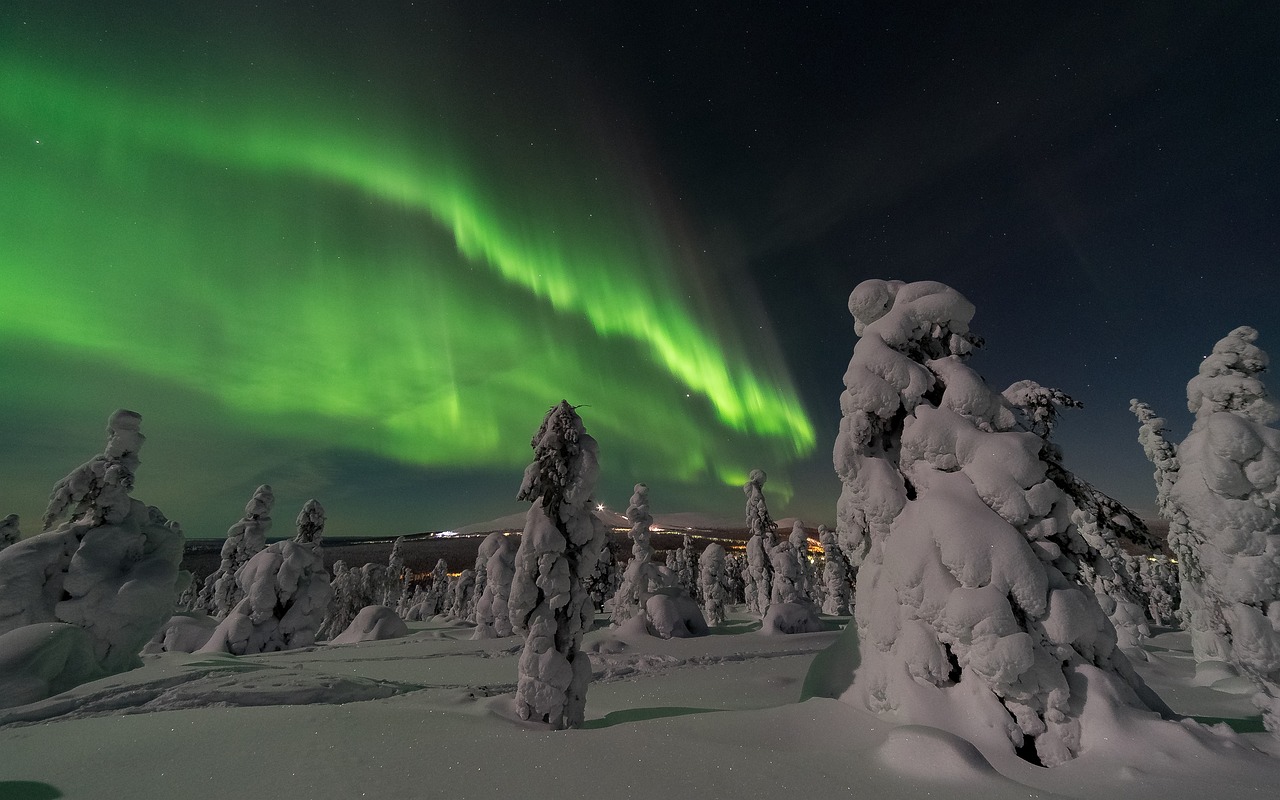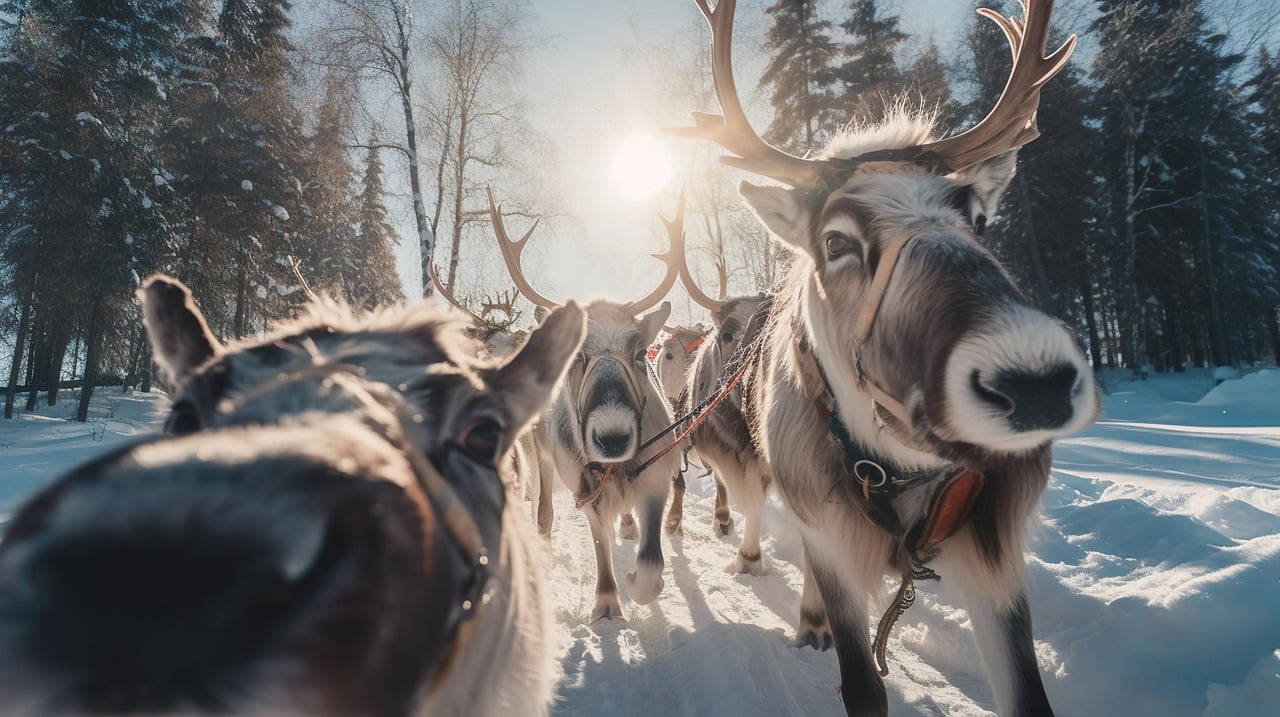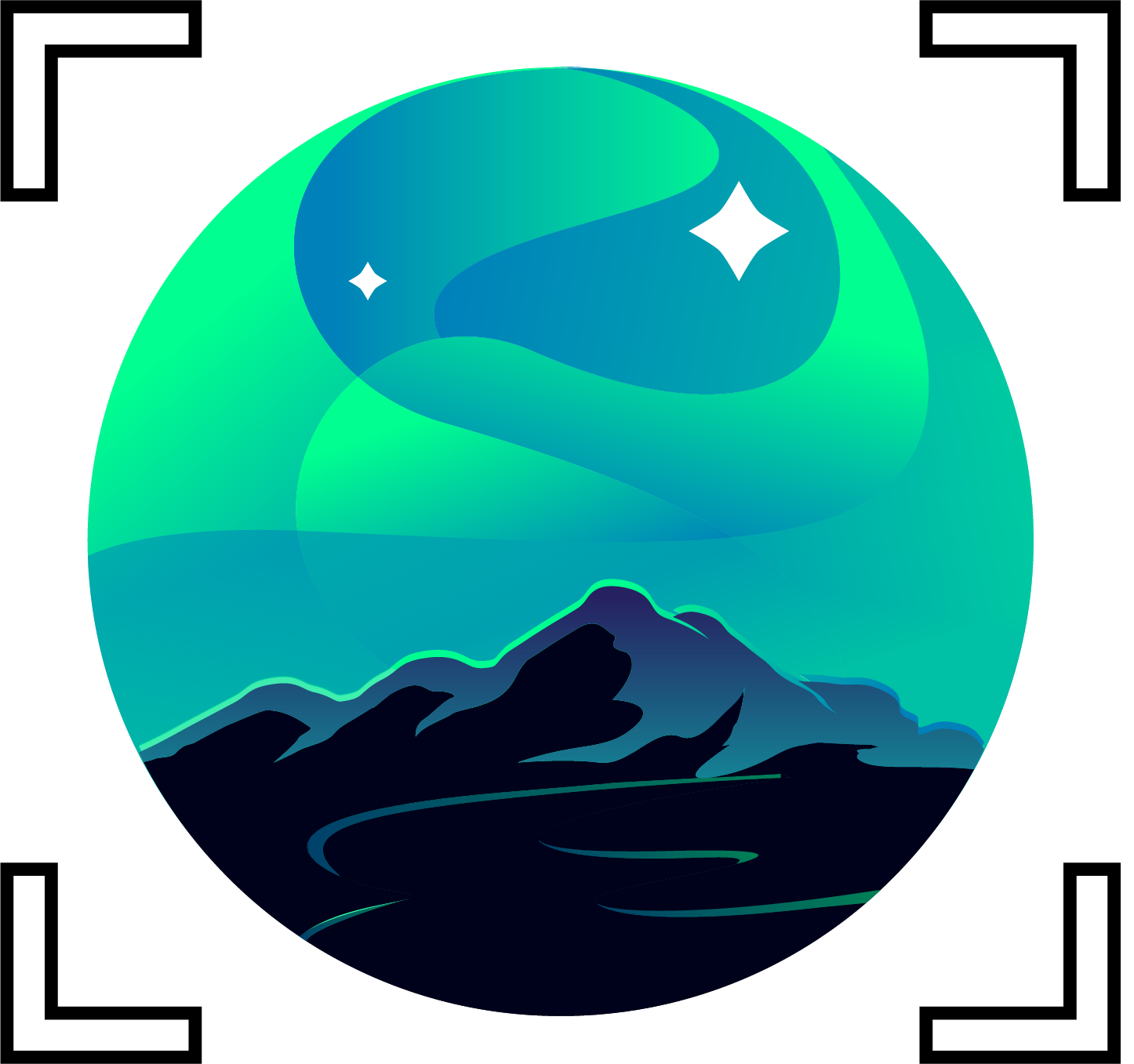Best Place to See The Northern Lights: Sweden or Finland?
The enchanting dance of the northern lights, or Aurora Borealis, is one of nature’s most magical phenomena. Both Sweden and Finland offer fantastic opportunities for witnessing this spectacle, but deciding which country is better suited for your aurora-chasing adventure depends on various factors such as location, accessibility, and the experience you’re looking for.
In this guide from Northern Lights Rovaniemi, we’ll compare these two countries in depth, focusing on key aurora-spotting regions, activities, infrastructure, and what makes each destination unique!
Aurora Visibility and Location
Sweden
Sweden’s northernmost regions are among the best places in the world for seeing the northern lights. Renowned for their pristine wilderness, dark skies, and minimal light pollution, these locations consistently rank among aurora chasers’ top destinations.
- Abisko: Known for having one of the most stable climates in Scandinavia, Abisko is often hailed as the best spot in the world for seeing the northern lights. The Aurora Sky Station in Abisko offers visitors a specialized viewing platform, and the surrounding landscape of mountains helps reduce cloud cover, enhancing visibility.
- Kiruna: Sweden’s northernmost city, Kiruna, is another prime location. Situated at the edge of the vast wilderness of Swedish Lapland, Kiruna provides great chances to witness the lights. It’s also known for activities like dog sledding, snowshoeing, and the iconic Icehotel located in nearby Jukkasjärvi.
- Jukkasjärvi: Famous for the world’s first ice hotel, Jukkasjärvi combines the magical experience of staying in a frozen wonderland with excellent aurora-spotting conditions. This remote village is ideally situated for seeing the lights from both comfort and adventure settings.
Sweden’s clear skies, especially in areas like Abisko, make it an optimal choice for aurora hunters who prioritize visibility and natural beauty.

Finland
Finland’s northern regions, particularly Finnish Lapland, are also excellent for northern lights. With vast areas of untouched wilderness, clear skies, and well-developed tourism infrastructure, Finland offers a more diverse array of experiences, blending aurora watching with cultural and adventure-based activities.
- Rovaniemi: While not as far north as some of Sweden’s locations, Rovaniemi is the gateway to Finnish Lapland and offers a unique mix of city comforts and wilderness. The town is famous for being the “official” hometown of Santa Claus, making it a family-friendly destination with a wide range of activities. Its position on the Arctic Circle still provides excellent aurora visibility from late autumn to early spring.
- Saariselkä and Inari: For those seeking a more secluded experience, Finnish Lapland’s northern villages such as Saariselkä and Inari offer greater remoteness, darker skies, and a high probability of spotting the aurora. These areas are less touristy than Rovaniemi but offer stunning natural beauty and opportunities for immersive wilderness adventures.
Finland’s strength lies in its combination of wilderness and accessibility, especially in areas like Rovaniemi, where travelers can blend luxury and adventure things to do with northern lights hunting.

Accessibility and Infrastructure
Sweden
- Ease of Travel: Swedish Lapland is relatively accessible from major Swedish cities like Stockholm. Kiruna has a small airport with domestic and international flights. The northern regions are well connected by train and road, making it easy to reach prime aurora spots.
- Tourism Facilities: Sweden boasts an extensive network of well-established tourism services, including specialized northern lights tours, guided wilderness excursions, and high-quality accommodations ranging from cozy cabins to unique ice hotels.
- Overall Experience: Swedish aurora-chasing experiences tend to focus on remoteness and wilderness. Visitors can often enjoy the lights far away from the distractions of modern life.
Finland
- Ease of Travel: Rovaniemi has an international airport with direct flights from several European cities, making it highly accessible for global travelers. Finnish Lapland is also well-served by buses and trains, making remote areas accessible even in winter.
- Tourism Facilities: Finland offers a wide variety of accommodations, from glass igloos designed for aurora viewing to cozy log cabins and luxury hotels. Tourism is well-developed, and there are a wide range of tour operators that offer everything from guided aurora safaris to snowmobile tours and reindeer sleigh rides.
- Overall Experience: Finland offers a more varied and family-friendly experience, with easy access to wilderness from cities like Rovaniemi and a broader range of winter activities such as visits to Santa Claus Village, reindeer farms, and extensive snow sports.
Cultural and Adventure Experiences
Sweden
Swedish Lapland is an ideal destination for those who prioritize serenity, remoteness, and nature-based adventures. The Icehotel in Jukkasjärvi adds a unique touch to the aurora-watching experience. Outdoor activities like hiking, snowshoeing, and dog sledding provide thrilling ways to explore the Arctic wilderness.
- Aurora Sky Station in Abisko: One of the world’s top northern lights viewing spots, the Aurora Sky Station offers visitors an elevated platform to maximize their chances of seeing the aurora. The station also offers aurora-themed dinners and nighttime photography tours.
- Wilderness Experiences: The sheer remoteness of Swedish Lapland makes it perfect for those who seek solitude and quiet reflection beneath the aurora.
Finland
Finland offers a blend of adventure and comfort. From exploring Sami culture to visiting Santa Claus, there is something for everyone in Finnish Lapland. For families, Finland may offer a more diverse range of activities.
- Glass Igloos and Snow Hotels: One of Finland’s unique offerings is the ability to watch the northern lights from the comfort of a heated glass igloo, a popular option in locations such as Kakslauttanen Arctic Resort.
- Husky and Reindeer Safaris: Whether you’re speeding through the snowy wilderness on a husky sled or taking a peaceful ride in a reindeer sleigh, Finland offers a wide range of ways to experience the Arctic.
- Sami Culture: Finland also provides opportunities to immerse yourself in the local Sami culture through village visits, handicraft workshops, and traditional meals.

Climate and Best Times to Visit
Both countries offer optimal conditions for spotting the northern lights between September and March, when the skies are darkest, and the weather is clear.
- Sweden’s Abisko: Due to its geographic location and surrounding mountains, Abisko benefits from a unique microclimate that often results in clearer skies, even when other areas are cloudy. This makes Sweden’s Abisko one of the most reliable places for seeing the aurora.
- Finland’s Lapland: Finnish Lapland also has clear skies and excellent conditions for aurora viewing, though it tends to have more variable weather than Abisko. That said, Finland offers many options for viewing the lights from the comfort of heated accommodations, making it a more comfortable option during the coldest months.
Which is Right for You?
- Sweden: Choose Sweden if you’re an adventurer at heart and want to maximize your chances of seeing the aurora in a remote, pristine environment. Abisko’s clear skies and Kiruna’s wilderness activities provide a more rugged experience for those who want to immerse themselves in Arctic nature.
- Finland: Opt for Finland if you’re looking for a more family-friendly and accessible experience. Rovaniemi’s mix of culture, adventure, and comfort makes it an appealing choice for travelers seeking a balanced blend of aurora viewing and other winter activities.
Both Sweden and Finland are exceptional destinations for seeing the northern lights, offering unique experiences depending on your preferences. Whether you prefer the reliable skies of Sweden’s Abisko or the family-friendly adventures of Finland’s Rovaniemi, both countries guarantee an unforgettable Arctic adventure. Ultimately, your choice should reflect the kind of aurora-chasing journey you wish to embark on, whether it’s a rugged wilderness escape or a magical winter wonderland experience.
